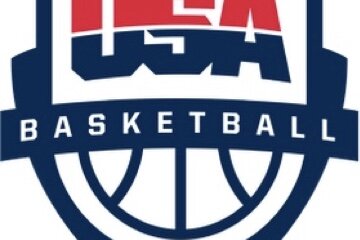There’s a certain arrogance that comes with overstepping ethical boundaries, particularly when your resume doesn’t come with the currency to purchase any legitimate credibility. While I may write recruiting advice, evaluate talent and photograph athletes, I’m still a basketball coach at heart. However, despite having spent 25 years on the bench of five different Division-I programs, it’s simply not my place to walk out onto the floor of an event or even take a player aside and appoint myself “coach” or “personal trainer”. I won’t lie, it’s been difficult many times watching some of the things that go on in front of me in gyms across the country while biting my tongue and not offering up my unsolicited two cents worth.
It’s even harder watching some of the pretenders on the peripheral of our game cross that line and take advantage of unknowing coaches, parents and athletes desperately looking for insight or a resource to advance opportunities. Today’s athletes are already getting way too much feedback from way too many sources. They have school coaches, club coaches, personal trainers as well as these self-proclaimed experts running individual events with little in the way of actual coaching experience to offer. And…if that’s not enough…we’ve got way, way too many LaVar Ball wannabe parents on the girl’s side of things as well. In that light, it’s not appropriate nor professional in any manner for me to jump uninvited into the mix regardless of my background or what I’m seeing on the floor.
So rather than cross that already trampled line, I thought I’d utilize my forum this time around to offer up a few thoughts that are, to say the very least, driving the basketball coach in me absolutely insane. Writing some thoughts generically for the consumption of coaches, athletes and yes…parents…isn’t overstepping those boundaries when the ultimate decision to read it or not lies with the individual. That same choice isn’t available to a teenaged girl when a grown adult ambushes her courtside with unsolicited critiques and opinions. Regardless of the intent (and often agenda), that scenario puts a young athlete in an unwarranted awkward spot. Basketball insights and observations can indirectly serve as recruiting advice if they improve a player’s performance. Hopefully these will be taken in the way they are intended, that being to stimulate some thought about a few aspects of play that are continuing to raise red flags among recruiters.
For better or worse, it’s time to address the Curry Effect.
First off, let me say that I have the utmost respect for Stephen Curry of the Golden State Warriors. He’s done a lot for the young players looking up to him both on and off the court. He’s an example of hard work and a focus on skills to be emulated by anyone picking up a ball. At the same time, we’re seeing more and more of a disturbing trend in the play we’re witnessing that may well result from a misinterpretation of just what his success means.
Curry is an entertainer, as are all professional athletes. Of course, they’re players and competitors as well, but remove the ticket sales, TV coverage and corporate promotion and you’ve got glorified pick-up ball. Keeping that in mind, simply put, we’ve got way too many players who think it’s good basketball to put it on the floor time and time again over the course of a single possession. Number #30 gets paid for it, while those on the high school, club and college level have a different job description.
Recently, in front of a litany of national evaluators and media, the 3 on 3 segment of the EGB Middle School All American games evolved into a “dribblefest” and overshadowed the very promising performances of many of the individuals on hand. If a player resorts to putting the ball on the floor 10 or 12 times in an effort to create something in an individual halfcourt setting, she’s not remotely coming close to understanding the bigger picture. Trust me, going “Curry” isn’t a compliment in this situation.
Any coach worth their salt will tell you that 3 on 3 is the great teacher while evaluators and recruiters will define it as the great revealer. Regardless of perspective, there are seldom any frowns when 3 on 3 is included on the agenda of any camp or evaluation event. However, that session in Dallas almost made many of us change our minds on even wanting to watch till to the very end. No doubt the skill sets of todays’ up and coming talent are far more advanced at this point in their career than any previous generation. We’ve got players on the horizon who can handle the ball as if they’ve been doing so since leaving the hospital in infancy.
But…just because you can…doesn’t mean you should.
Somebody isn’t telling these players that the application of skills is every bit as important as the mastery of them. If a dribble does nothing to advance the ball, improve a passing angle or lead directly to a shot then it was wasted. Players today are neither comfortable nor patient holding the ball. Their answer to the urgency they feel on the catch is to put it on the floor regardless of what it may or may not accomplish. Which leads us to another issue eating away at this old coach. And once again, our reliable friend 3 on 3 exposed it for the great deficiency that it’s becoming.
The amount of standing that’s going on is staggering for any age. We’ve evolved into a “your turn – my turn” attack with teammates serving as spectators to the 1 on1 effort of one of their own. In that same event we had four courts going in front of us with all playing 3 on 3 over the course of an entire evening. I began to count the number of screens being set and stopped very quickly. Not because there were too many to count. Quite the opposite. We went through several entire games without a single screen being set. Not one.
Not once did anyone screen away. There were no ball screens and nobody who cut through took it upon themselves to set a backscreen either. Now don’t get me wrong, some screening did occur over the course of the evening but given the total combined number of possessions at all four baskets, they were essentially nonexistent.
And, as long as I’m holding the two-time MVP of the NBA responsible, the answer to that uncomfortable sense of urgency is not to put it up every time you touch it either. We’ve witnessed shot selection become a lost art over the last several years and the success of Curry’s Golden State team with the long ball hasn’t helped young players grasp the importance of each possession. In several recent events I’ve seen more shots going up on the entry pass than at any time in recent memory…and sadly I’m not talking about lay-ups. It’s obvious why the US ranks 27th worldwide in math with the obvious inability to calculate percentages that we see at times in shot selection. Going a step further, the repetitive shouts from the stands to “shoot the ball” are clear evidence that some choices we’re seeing aren’t based on the situation or defense in front of a player.
Whether those watching courtside are college coaches, experienced evaluators or media, nobody is remotely impressed with a player jacking it up at every opportunity at the expense of their team. Even less so if it was because someone else told them that it was a good look. That’s a recruiting red flag times two with bad decision making as well as a lack of focus by listening to voices in the stands. Basketball IQ is a big thing among recruiters and seeing that player who “lets it fly” time and again without the effort to create better looks or options throughout a possession doesn’t serve as much of a selling point.
Which takes us full circle back to the incessant need to put the ball on the floor.
Being the best ballhandler in the gym is meaningless if it does nothing but waste time and allow helpside defenders to read and anticipate. Add in a shot clock plus two additional defenders and that kind of individual play serves little purpose whatsoever. Look at Notre Dame’s senior point guard Lindsey Allen and you’ll see the epitome of ballhandling efficiency and decision making. With a dwindling clock, the shot “heard round the world” (The pull up from Mississippi State’s Morgan William to defeat UConn) came off just three dribbles. In that same light those off the ball need to get it in gear and understand that the ability to make yourself an option without the ball is a highly coveted trait not only with your teammates but among knowledgeable college recruiters as well.
This isn’t all on the shoulders of the players. Those coaching them need to actually teach them as well. It’s time to put away those tough defenders (those ultra-aggressive, agile and oh so quick chairs/cones) and start working against some real-life opposition possessing a heartbeat to develop not only skills but court awareness and spacing. We’ve got way too many products of old school training that are not translating into game time productivity when the defense can…you know….move.
In theory, training one on one has value and makes sense, but only to a degree. There needs to be a greater balance and depth in the structure of the work that can only come from creating actual “live” situations. Players should look to go to the gym with three or five teammates. The repetition, repetition, repetition of skill development needs to be applied to situational play as well. It’s naïve to think that you can develop options and recognize scenarios when your defense folds up or stacks on top of one another for storage at the end of a workout.
If you’re not blown away by the talent and potential coming then you’re blind. The skills themselves are unbelievable but that also comes with a tremendous concern for the actual basketball itself. We need coaches, parents and all of those on the peripheral of the game to temper the prideful congratulations, accolades or rankings and in turn challenge them to strive for more than just their “handles” or “shot”. All the skills in the world are useless if they aren’t utilized in a productive manner. There are a lot of players putting up good numbers on losing teams who have more to offer than they know.
Experienced college coaches almost always start with the same simple question regarding any recruit they’re looking at.
“Does she make us better?”
Of course, plenty of additional considerations go into any recruiting decision for a staff but most become irrelevant if the answer to Question Number One isn’t a confident and resounding yes. Coaches pass on players in every recruiting class that have the tools but lack the essential knowledge of how to put them to use come game time. More and more players are setting themselves up to be under recruited because they don’t know how to play without the ball and, in turn, put their head down and force the issue once they do get their hands on it.
We hear time and again about the need to “grow the game”. Well, that starts on the floor itself not in social media, self-promotion or Handclap Hoopla. Today we’re walking a fine line of playing more while accomplishing less than at any point in recent memory. It’s a disservice to players to not give them the honest feedback, resources and instruction they need when they possess all the possibilities of high powered Porsche. They just need to know when to hit the gas and ultimately how to drive it.
Mark Lewis is a national evaluator and photographer for Blue Star Basketball as well as the lead columnist for Blue Star Media. Twice ranked as one of the top 25 Division I assistant coaches in the game by the Women's Basketball Coaches Association (WBCA), he logged 25 years of college coaching experience at Memphis State, Cincinnati, Arizona State, Western Kentucky and Washington State. Lewis serves as a member of the prestigious McDonald’s All-American selection committee as well as the Naismith College Player and Coach of the Year committees.










